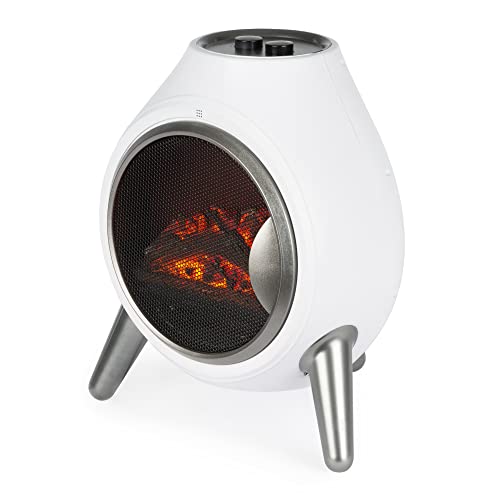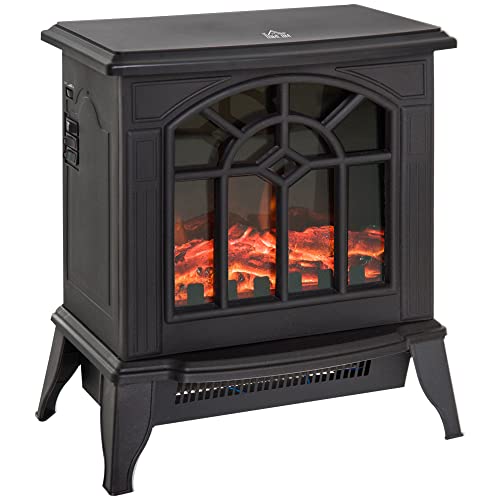What's The Job Market For Wood Burner Fireplace Professionals Like?
페이지 정보

본문
 How to Get the Most From a Wood Burner Fireplace
How to Get the Most From a Wood Burner FireplaceUnlike traditional open fireplaces wood stoves are designed and optimised to burn firewood. This allows them to meet stricter emission standards.
Wood burning stoves emit glowing yellow flames that dance and warm crackling sounds. They also give warmth and a warm sensation. However, the smoke it creates includes carbon monoxide and harmful air pollutants like benzene, formaldehyde and polycyclic aromatic hydrocarbons.
Efficient
Fireplaces and stoves made of wood are not just beautiful, but also extremely efficient. A high-quality wood burner can have an Ecodesign rating of up to 77%. With rising energy costs it is important to ensure that you're getting the maximum benefit from your log burner - the good news is that it's much easier than ever before!
The amount of moisture in firewood is a key factor that determines how efficient a stove that burns wood is. We recommend using only dried and seasoned wood that has dried over a period of at least one year and in some cases, two years. The more dry the wood is, the better it burns. This means less smoke, and less harmful emissions.
A wood-burning stove also has the benefit of being an eco-friendly fuel source which is great for the environment. By purchasing locally sourced wood, you are also helping to promote the active conservation and management of woodlands. This is great for wildlife.
The only thing a wood burning stove needs in terms of maintenance is that you regularly remove and eliminate the ash. It's a bit of a hassle but it's worth it to get the most heat from each log. If you allow the ashes 2-3 days to completely cool and then, they can be used as a non-toxic, green melting ice. They can also be used to polish jewellery and absorb smells.
A wood-burning wall fireplace is a timeless classic. Although they are less popular than gas fireplaces, the allure and ambiance of a roaring fire cannot be denied. These fires are great for snuggling in on cold winter nights, and make a warm and inviting space within your home. Choose a high-quality wood stove and you'll start benefiting for many years to be! Our chimney sweeps are on hand to help you get the most from your stove. Give us a call now to find out more.
Low Carbon
Wood burners that are clean and efficient are among the most efficient ways to save money on logs while keeping your home warm. As an added benefit they also help to support the local woodland management. It's a great way of supporting the wildlife in your local environment.
If properly maintained, wood-burning fireplaces and stoves emit very little pollution when they are operated with dry and seasoned wood. When they are not properly maintained or use wood that is of poor quality the smoke produced contains fine particles, commonly referred to as particulate pollution that can cause irritation to the lungs and other body organs. Carbon monoxide, toxic air pollutants such as benzene and formaldehyde and polycyclic aromatic hydrocarbons are also in the. Inhaling this type of air pollution can cause irritation of the lungs as well as wheezing, coughing, and asthma attacks and may even lead to serious health issues such as cancer, heart disease, or premature death.
Some people worry that using a wood burning stove can cause climate change however this isn't necessarily true. The combustion of wood produces energy that is carbon neutral. The wood absorbs carbon dioxide throughout its lifespan. When burned, the carbon is released into the air.
As the wood is sourced locally this decreases the amount of pollution that is released when it is transported. It is also essential to select high-quality well-seasoned hardwoods, as they will give a longer and more even burn than softwoods.
modern fireplace wood stoves, such as the ones manufactured by Charlton & Jenrick, emit less carbon dioxide than older stoves. They have been tested and certified to meet 2020 EPA standards which are much more strict than previous emissions limits.
To avoid a build up of exhaust within your home, all wood-burning stoves should be vented to the outside. By keeping flames above the logs and making sure you use dry, seasoned and dry wood, all of our current clean burn and DEFRA exempt stoves can produce extremely clear exhaust and have particle levels of 60 percent or less below the DEFRA limit.
A wood-burning stove with an integrated unit or catalytic converter is the ultimate low carbon heating option. These units re-ignite gases and particles that were ignited during the initial burning in a subsequent phase by mixing them with superheated air. They then channel the remaining particulates and gasses through a catalytic combustor for a third and final combustion, decreasing emissions to levels much lower than the standards set by the government.
Clean Burn
Cleanburn wood stoves burn fuel at the highest efficiency possible. This means that there are fewer dust emissions into the atmosphere when burning wood. The air management system of the stove controls the intake and exhaust of gases to ensure the combustion process is conducted in a safe and controlled environment. It also regulates the flame's height to maximize the output of heat and reduce emissions.
This means that your chimney as well as the surrounding area will be cleaner than older stoves. Particulate matter (also called particle pollution) from wood that is not fully combusted can cause respiratory problems like wheezing and coughing and can lead to the development of heart diseases, stroke, diabetes and other serious health problems. The smoke caused by wood burning is a contributory factor in poor urban air quality.
The smoke from poorly combusted wood contains fine particulate pollution and hazardous air pollutants such as carbon monoxide, volatile organic compounds, nitrogen oxides, benzene formaldehyde, and polycyclic aromatic hydrocarbons. These particles can get into the organs of the lungs, causing damage, discomfort and even death. Airborne dust can also damage surfaces in your home and give them a rough feel.
It is essential to use only high-quality, seasoned and dried firewood when you use your wood burner fireplace. Hardwoods like oak beech, ash, and ash are the best choice for heating. Hardwoods are dense and have a higher BTU content than softwoods. They also have more heat.
Contact your local authority to see if they have any rules regarding wood burning. They could include rules for nuisance or odor and visible emissions or smoke opacity limits.
It is important to keep the glass of a wood stove that has an open front that is free of dirt and deposits. You can use a dry towel or oven cleaner spray to accomplish this. You can also add bicarbonate soda mixed with water to the glass.
Regular maintenance is essential for your chimney and stove. Regular chimney cleanings are necessary to remove creosote, and to ensure that the flue is operating properly. Be sure to note dates for periodic inspections in your diary, as this will allow you to avoid costly repairs and prolong the life of your wood burner.
Low Maintenance
Many people prefer installing wood burning ethanol fireplaces because of the warmth and natural beauty they provide. This kind of fireplace requires a bit of maintenance and upkeep. The chimney, flue, and stove are all possible sources of house fires, if they're not maintained and cleaned regularly. Fireplaces are also an excellent source of warmth when power is out, especially during winter when snow storms can cause branches of trees to fall and rip down power lines.
If you use a wood stove to heat your home, you will reduce your carbon footprint as compared to other fossil sources of energy like gas. Modern wood stoves, inserts and fireplaces are constructed to meet EPA standards (Environmental Protection Agency) which means that they produce very little emissions. The more seasoned wood you use, the more efficient the stove will be. You'll need less wood to achieve the same heat.
The fireplaces require some attention and maintenance. They should be placed away from the combustible materials and have a screen installed. Making sure the grate is free of ash and debris will aid in the flow of air and will stop the fire from dying out quickly. It will also help keep your home clean. You should have your stove and chimney cleaned at least twice per year to prevent the build-up of creosote which could create a fire hazard and a clog that can restrict the flow of air.
It can take a while for a new homeowner to master the art of to ignite, light and maintain a continuous fire; visit the next website page, in the fireplace. Once you've learned the art of lighting, your wood stove will become a source for warmth and comfort in your home.
 Wood burning wooden fireplaces have been in use in a variety of forms for nearly 500 years, and they've regained popularity because of their effectiveness as well as their sustainability and natural warmth and aroma of real wood. Talk with your local Regency dealer about the benefits of wood stoves or inserts for your home if you're planning to purchase a new heater.
Wood burning wooden fireplaces have been in use in a variety of forms for nearly 500 years, and they've regained popularity because of their effectiveness as well as their sustainability and natural warmth and aroma of real wood. Talk with your local Regency dealer about the benefits of wood stoves or inserts for your home if you're planning to purchase a new heater.- 이전글The 10 Most Terrifying Things About Bifold Door Roller Replacement 24.11.01
- 다음글20 Pragmatic Ranking Websites Taking The Internet By Storm 24.11.01
댓글목록
등록된 댓글이 없습니다.


